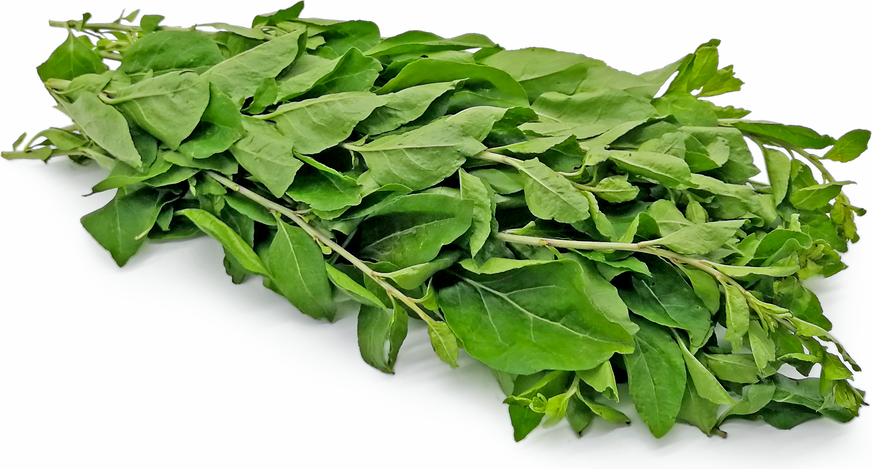


Wolfberry Leaves
Estimated Inventory, lb : 0
Description/Taste
Wolfberry leaves are small to medium in size, averaging ten centimeters in length and four centimeters in width, and are oval or spear-headed in shape, depending on the variety, and taper to a point on the non-stem end. The leaves grow in alternating patterns or clusters along the branches and have a prominent central vein running through the center of the leaf. Wolfberry leaves are thin, smooth and dark green with a grassy fragrance. They have a slightly bitter, spinach-like taste with notes of watercress and mint.
Seasons/Availability
Wolfberry leaves are available year-round, with a peak season in the summer.
Current Facts
Wolfberry leaves, botanically classified as Lycium barbarum and Lycium chinense, grow on shrubs with thorny branches and are members of the Solanaceae, or nightshade family along with potatoes, tomatoes, and eggplant. Also known as Goji leaves in the United States and Goji chai and Kau Kee in Chinese, Wolfberry leaves grow on shrubs that can reach over three meters in height and also grow the well-known goji berries. It is recommended to cook Wolfberry leaves prior to consumption in order to remove any toxins that may exist. Wolfberry leaves have a long history of use as a vegetable in Asia and are commonly used in teas for their high nutritional content.
Nutritional Value
Wolfberry leaves contain vitamins A, B, C, and E, protein, beta-carotene, calcium, and flavonoids that have antioxidant and antimicrobial properties.
Applications
Wolfberry leaves are recommended to be cooked and are best suited for recipes such as steaming, sautéing, and boiling. They may be used as a substitute for spinach in many recipes and are most often used in soups, paired other ingredients like chicken or pork, eggs, and ginger. Wolfberry leaves should first be removed from the thorny stems and washed. The leaves cook very quickly and are only added to the soup during the last five minutes of simmering. Wolfberry leaves are also used in stir-fries along with garlic and oil, paired with scrambled eggs and goji berry fruit, or sautéed and served as a green side dish. Wolfberry leaves pair well with scallops, chicken, pork, eggs, oyster sauce, goji berries, carrots, and celery. They will keep up to three days when stored in a plastic bag in the refrigerator.
Ethnic/Cultural Info
The Chinese view the Goji berry plant as an important source of nutrients and use the berries, leaves, bark, and roots of the plant in traditional medicine. Wolfberry leaves and buds have been documented as being used in medicinal teas in China for around 2,000 years and are said to have the same antioxidant benefits as the berry. Wolfberry leaves are also considered to be a cooling food that can help with stamina. They are believed to be especially good for the liver, lungs, kidneys and eyes. Chinese parents have been known to feed their school-going children Wolfberry leaves during times of tests and examinations.
Geography/History
The exact origin of the Wolfberry plants is unknown, but it is speculated that they are native to Asia and southeastern Europe. Goji berries have been consumed in China, Japan, and Korea for over 4,000 years. Zhongning county in Ningxia in China is considered to be the birthplace of Goji berry cultivation, and the Ningxia region remains the largest producer of Goji berries. Today Wolfberry leaves can be found at fresh markets and specialty grocers in Asia, Southeast Asia, Australia, and the United States.
Recipe Ideas
Recipes that include Wolfberry Leaves. One
| Mom's Chinese Kithchen |
|
Goji (Wolfberry Leaf) Soup |
| The New Paper |
|
Stir-Fried Wolfberry Leaves |




